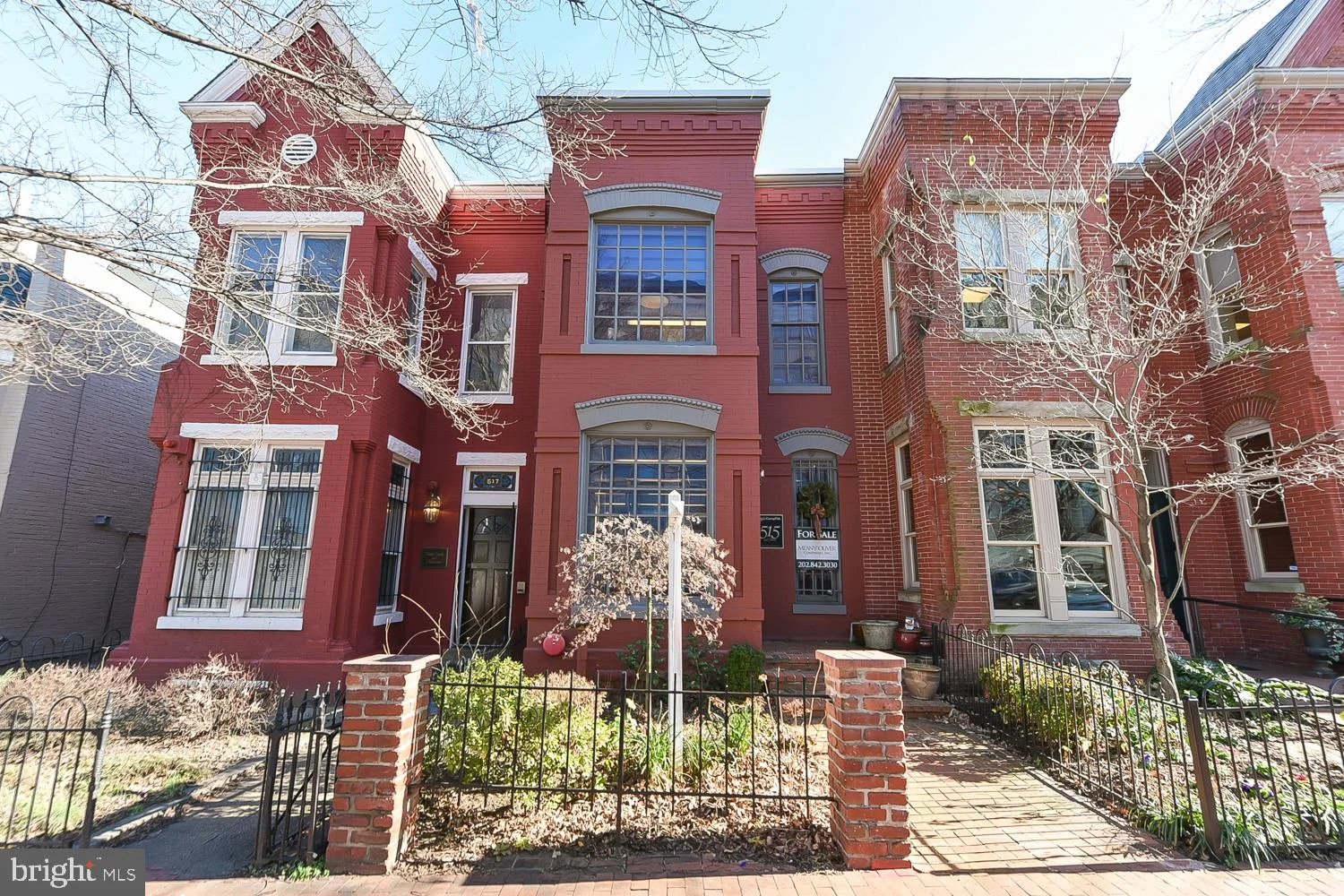WASHINGTON--(BUSINESS WIRE)--Washingtonian Magazine announced their annual list of Top Producers for the Washington metro area. This year RLAH Real Estate is proud to have 43 Realtors® included among the area's best:
Carver-Langston begins at the corner of Benning Road NE and Bladensburg Road NE—the iconic (or infamous, depending on traffic) Starburst Intersection at the eastern end of the H Street Corridor. From there, it branches out eastward until it reaches the grounds of the National Arboretum and the Langston Golf Course.
While Carver and Langston are technically two separate neighborhoods, they have long been considered part of a pair. Their names are derived from two famous African-American figures: the agriculturalist George Washington Carver and John Mercer Langston, a politician and architect of Howard University’s law school.
Langston’s name is linked with another aspect of the neighborhood’s history, the Langston Golf Course. Opened to the public in 1939, the 18-hole course was one of the first in DC to open to African-American golfers.
While the golf course looks to be protected for the foreseeable future, the same can’t be said of a more commercial icon of the neighborhood: Hechinger Mall.
Built in 1981 and named for the home-improvement store once located there, the strip mall is being eyed as the prime site for commercial and residential developments. While official plans for the site have yet to emerge, some upcoming development projects near the site include a 180-unit mixed-use development at 1701 H Street NE and a second phase of the Flats at Atlas (an expected five stories and over 300 units).
Read more here.
When you buy or sell real estate, you’ll want to get a good idea of the property’s value. Understanding value helps you set a price when you’re selling. After all, you don’t want to ask too little and leave money on the table, or ask too much and hold up your sale. If you’re the buyer, knowing how to accurately estimate a home’s value lets you spot a bargain and keeps you from overpaying. Later on, it helps you gauge your home’s equity if you want to borrow against it.
What Are Comps?
Estimating a home’s value can be more of an art than a science, but there are some tools that will make it possible for you. That is where real estate comparable listings, (i.e. “comps,” in Realtor speak) come in. Comps are sales records of recently sold homes, typically within the past 6 months to one year. Appraisers and real estate agents use them to get the most accurate estimate possible of a home’s value, and you can, too.
Finding comps involves looking for recent sales of houses as much like your own property as possible, then comparing your home to them and adjusting your price to account for the differences. Your real estate agent will send you a Comparative Market Analysis (CMA), which is simply an overview and statistics on your list of comps.
Keep in Mind
When reviewing comps, you’ll likely see homes that are For Sale, Under Contract, or Coming Soon. These aren’t great comps because we don’t yet know the final sale price.
Sold prices don’t reveal sellers’ concessions, so be sure to read your CMA carefully and take note of any closing cost paid by the Seller. A home’s recorded sale price might be $220,000, for instance, but if the buyer persuaded the seller to spend $3,000 to help with the buyer’s closing costs, the true price, $217,000.
There are hidden cost that you’ll never be aware of, like if the buyer persuaded the seller to spend $3,000 on furnace repairs.
Comps with plenty of photos give clues to construction quality, landscaping, home features and upkeep.
Noting a listing’s price-per-square-foot gives you a somewhat useful data point for comparing listings. However, local property tax records tend to be inaccurate, so don’t weigh too heavily on this number. If it isn’t shown on a listing, you can calculate it: Divide the sale price by square footage (both numbers commonly included in listings). For example: A 1,200-square-foot home that sold for $300,000 has a square-foot price of $250 (300,000 ÷ 1,200 = 250).
Standards to Apply
Sold listings carry the most weight, and those that are most similar and most recently sold will typically take precedent.
Focus on listings that have sold in the past six months, which is also the standard used by appraisers.
If you can’t find any decent comps within the past six months, then extend your search to the past year.
In a subdivision, you may find sold listings with identical floor plans. That’s ideal. Otherwise, try to find homes that are roughly the same size with floor plans similar to yours — like a 1500 sq. ft row house if yours is a 1500 sq. ft. row house.
It’s OK to search for similar numbers of bedrooms and baths, but similarities in gross living area matter as well.
Seasonality and market activity plays a factor, so your home may sell for more during the peak season (Spring) and in hot markets; and expect to pay a bit more as a buyer.
What to Consider When Finding Comps
Location: Limit your search to a quarter- to half-mile from your home.
Time frame: Only include homes that have sold within the past three to six months — or less if your market is changing quickly.
Size: Try to stay within about 300 square feet of your home’s size.
Bedrooms/bathrooms: Include homes with the same number of bedrooms and bathrooms as yours.
Condition of home: Factor in things like recent renovations, updated interiors or outdated features.
Age of home: Homes built around the same time as yours will be the most accurate comps, because major systems like roofs, HVAC and plumbing should be in similar condition.
Nearby features: Find homes that align with yours in terms of walkability, shopping/retail, waterfront proximity, views, public transportation access and school ratings.
Price per square foot: Real estate agents use price per square foot to identify comparables. Divide the sale price of a home by its square footage, then compare that number to your own desired price per square foot.
Doing your own comps gives you a decent idea of value — at no cost or obligation. What’s more, it can be fun and informative to get a deeper understanding of your neighbors’ home values — and your own. Whether you’re buying, selling, or browsing, knowing how to price a home will give you a distinct advantage.
WHAT YOU NEED TO KNOW ABOUT THE ESCALATION CLAUSE
With DC being one of the hottest real estate markets in the country, it's common for buyers to find themselves competing with other buyers for the same home. One of the most common strategies used is the escalation clause.
WHAT IS THE ESCALATION CLAUSE?
An escalation clause is an optional part of an offer stating the buyer will increase their offer by X amount over a higher bid — but usually no higher than a stated amount (the cap). The clause is triggered by a competing offer, and can be a way to beat out the competition. Here's an example: If Buyer 1 puts in an offer of $750,000 on a home priced at $750,000, and Buyer 2 offers $751,000, Buyer 2 should get the house, right? Well, not if Buyer 1 has an escalation clause increasing her offer to $2,000 above the highest bidder up to a cap of $775,000. In the aforementioned case, Buyer 1 would get the house for $753,000. An escalation clause can move up in various increments, usually ranging from $1,000 to $5,000.
DOES IT IMPACT FINANCING?
Let's say you put in an offer with a 25 percent down payment, so you are getting a loan of 75 percent of the purchase price from the bank. If an offer with an escalation clause ends up being the winning offer, that loan can be dealt with in one of three ways:
No changes are made to the loan, and the buyer makes up the difference in cash.
The loan automatically applies to the new amount, assuming that the borrower is approved for 75 percent of the final sales price.
The loan covers some of the difference between the asking price and final sales price, and the buyer will pay the difference between the loan and the purchase price at settlement.
HOW DO YOU KNOW IF THERE WAS ACTUALLY ANOTHER OFFER?
The escalation clause contains language that allows the winning bidder to get proof of the other offer. This is typically done by providing a copy of the first page of the other offer's contract, and/or their escalation clause. Once you have proof of the other offer and receive the final sales price, the winning buyer must provide the final signature to officially go under contract.
At-Large Councilmember Elissa Silverman introduced a bill on Tuesday that would increase penalties for landlords who refuse to rent to people who use federal rental assistance vouchers (previously called Section 8 vouchers) to pay their rent. While it’s already technically illegal for landlords to discriminate against renters based on their “source of income,” discrimination in housing ads remains rampant in the District.
A WUSA9 investigation found more than 100 Craigslist ads in the District with language like “No housing vouchers” or “Vouchers not accepted” written plainly in the description of housing ads. In response, the D.C. Attorney General’s office sued two affiliated real estate companies in the District for allegedly discriminating against recipients of housing vouchers in their rental process.
Silverman’s bill would increase penalties for any landlord who violates the D.C. Human Rights Act and “advertises their intent” to discriminate against housing voucher holders. The legislation would require the payment of a fine to the Office of Human Rights—$10,000 for the first violation, $15,000 for the second, and $20,000 for every subsequent violation, according to the text of the bill as introduced.
At-Large Councilmembers David Grosso and Anita Bonds, Ward 1 Councilmember Brianne Nadeau, Ward 2 Councilmember Jack Evans, and Ward 6 Councilmember Charles Allen co-introduced the measure, and the bill currently has the support of a majority of the D.C. Council.









